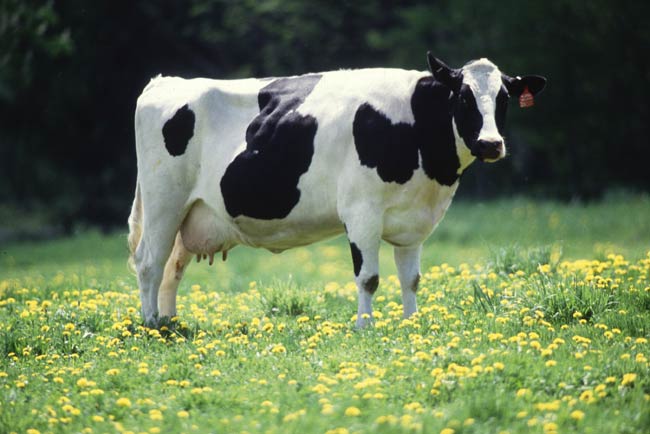Proteins Gone Mad: Scientists Seek 'Switch' that Activates Cow Disease

Before turning brains into Swiss cheese, the proteins that cause mad cow and related diseases must be turned on by the flick of a switch, new research suggests. Researchers just aren't sure what that switch is.
These proteins – called prions – are special because they are infectious, meaning they can spread from organism to organism or between cells. They are the culprit behind diseases like mad cow disease, scrapie (in sheep) and Creutzfeldt–Jakob disease in humans. Scientists have known that accumulation of prions in brain cells causes cell death, turning brains into a spongy mush. They also know such prion diseases are untreatable and always fatal.
"We are trying to understand the relationship between the production of the prions and when the animals get sick," said lead study researcher John Collinge, of University College London. "The traditional thinking was that the infectious prions were the cause of disease. We found the opposite."
The study will be published tomorrow (Feb. 24) in the journal Nature.
Infectious diseases
Most infectious diseases are caused by viruses, bacteria, fungi or protozoa, organisms with genes that define them. Prions don't have this gene-based code, they consist of just a protein (a chain of amino acids).
The normal, noninfectious prion protein is found throughout the body. Prion protein causes disease only if misfolded. When a misfolded prion comes in contact with a regular prion, it can contort the regular prion into the misfolded form, a property that makes it infectious. This can happen when an organism, such as a human, consumes infected tissue (as in kuru, a prion disease found in cannibalistic tribes), or when a genetic mutation occurs in the body's normal prions.
Get the world’s most fascinating discoveries delivered straight to your inbox.
The malformed prions grow into threads, which are stable and not easily broken down. The threads accumulate as amyloid plaques, similar to plaques in patients with Alzheimer's disease, which kill brain cells. It takes time to build up enough of the protein to make these plaques, and the more prion protein a cell makes, the faster it happens.
Mice and prions
Collinge and his colleagues studied mice that had been genetically engineered to have very high levels, normal levels or low levels of normal prion protein. When infected with misfolded prions, the high-level mice accumulated these misfolded prions into plaques very quickly (in about 50 days), and disease followed about a week later — about 57 days after being infected. Normal-prion mice took about twice as long to reach maximum prion levels and didn't show symptoms for an additional 50 days, or 150 days following infection. For the low-level mice, it took about 150 days to reach peak prion levels, and they didn't show disease until over 100 days later.
The results suggest that having peak levels of prions doesn't make for disease, the researchers said. The link between prions and disease must not lie in the actual protein level but somewhere else, the team reasoned.
"What this work has done is uncoupled the two; the toxic species and the infectious species are not the same thing." Collinge told LiveScience. "The key now is to try and identify the toxic species."
The researchers suggest that once the plaques accumulate, a switch gets tripped, turning the infectious form of the protein (the misfolded proteins injected into mice), into a different, toxic form. It is also possible that the toxicity is dependent on the size and shape of the plaques, said Reed Wickner, author of a News and Views article on the paper in the same issue.
"There are lots of ideas that fit the data," Wickner told LiveScience. "We kinda know how infectivity works, but not the toxicity."
Understanding more about the relationship between amyloid plaques and disease in prions can also help researchers understand the process in Alzheimer’s, Collinge said, "it's not inconceivable that similar mechanisms could be involved in other diseases."
Jennifer Welsh is a Connecticut-based science writer and editor and a regular contributor to Live Science. She also has several years of bench work in cancer research and anti-viral drug discovery under her belt. She has previously written for Science News, VerywellHealth, The Scientist, Discover Magazine, WIRED Science, and Business Insider.



